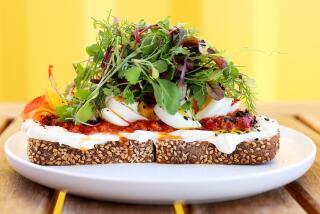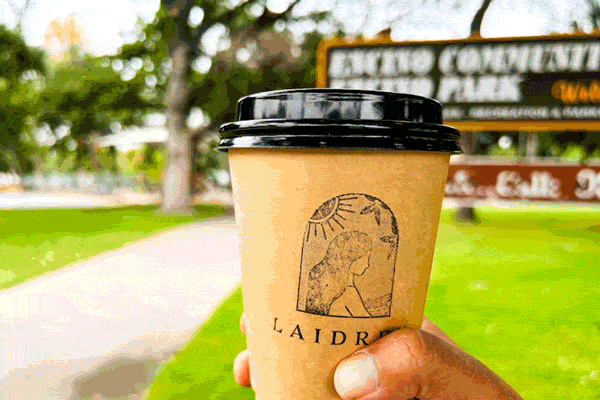Drinking in Vienna’s Other Passion
- Share via
The Viennese soul is fed by music, but it’s lubricated by coffee.
The Viennese go to a coffeehouse for coffee, but that’s only part of it. Cafe life is set on a foundation of literary history, argument, romance, politics and gamesmanship. One may argue that the intellectualism of cafe society evaporated with World War II, but one may still sit on a velvet sofa and read over a Melange (half coffee, half milk), or eavesdrop on his neighbors over a Brauner (with just a little milk) and slice of rich chocolate torte.
Vienna today is experiencing a mini-Renaissance of its cafes; after the war, many were turned into shops or banks, and tradition wafted away on the winds of change. Following is a list of cafes, each with a personality and history and well worth a stop:
Central, Herrengasse 14. All who love the Cafe Central should first raise a cup in toast to Franz Kolschitzky. In the late 17th Century, Kolschitzky was granted permission to open a public coffeehouse as a reward for spying on the hated Turks. Some histories report that he baked the first Kipferl , a flaky pastry in the shape of a Turkish crescent.
The Central is Vienna’s most stunning cafe today and probably its most important. Among the guests who gathered to quarrel, flatter, philosophize and play chess were Theodor Herzl and Rainer Maria Rilke, Alfred Adler and Arthur Schnitzler, and Sigmund Freud and Lev Bronstein, a Russian emigre and socialist who liked to play chess. Later in life, Bronstein was known as Leon Trotsky.
Demel, Kohlmarkt 14. Not a true Kaffeehaus, but perhaps the ultimate Konditorei --where the cakes and pastries come in a close second to the coffee. The 200-year-old Viennese institution, a must-stop on every tourist’s agenda, still serves up some of the best pastries in the city. The Milchrahm Strudel --a rich, souffle-ish concoction of egg and cream--is a classic, the hot chocolate to die for. The service is often indifferent, the dining-room furniture uncomfortable, the prices high. But Demel is essential Vienna.
Hawelka, Dorotheergasse 6. As elegant as Demel is, Hawelka is funky. The worn tables and chairs, the sagging booths provide comfort these days to the pseudo-hip and celeb wanna-bes, and it’s positively rowdy compared to the more conservative cafes in town. No longer a hangout for the elite and the artistes, but the coffee mit Schlag (whipped cream) is terrific and the waiters in their black suits are right out of a Sternberg film.
Schwarzenberg, on the Ring, the boulevard that encircles the center of the city, near the Schwarzenbergplatz. Sedate and cozy, the Schwarzenberg draws theater- and opera-goers (it’s a five-minute walk from the State Opera) and provides the perfect perch for people-watching from its outdoor tables. Waiters are friendly, the Old World charm practically oozes here, and there’s no better place for a winter nightcap.
Pruckl, Stubenring 24. Slightly worn at the edges, the Pruckl has decent food, high ceilings and terrific light for reading the daily papers. One of the great old cafes of the Ring.
Landtmann, on Dr. Karl Lueger Ring, next to the Burgtheater. Politicos, newspaper people and gadflies combine to make the splendid Landtmann a meeting place with an abundance of Gemutlichkeit (coziness). This cafe is one of Vienna’s most picturesque, and most understated, and the outdoor cafe is packed when the weather accommodates.
More to Read
Sign up for The Wild
We’ll help you find the best places to hike, bike and run, as well as the perfect silent spots for meditation and yoga.
You may occasionally receive promotional content from the Los Angeles Times.






